Tracking specialized freefall units: goTenna and ATAK connect military freefall operators during infiltration
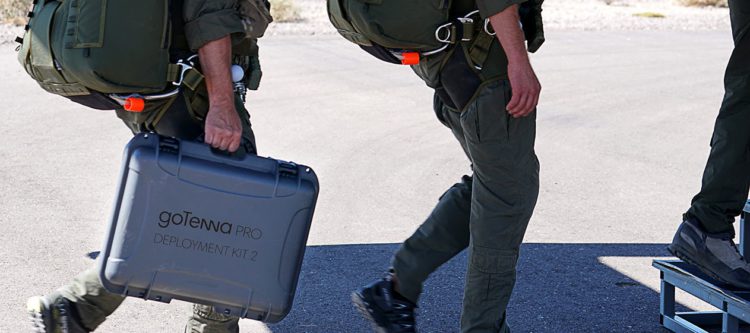
With hundreds of pounds strapped to their backs, one hundred mile winds tossing them around mid-air, and the thick blanket of night impeding their view, military freefall operators have less than a minute to act. In those few seconds, any decision they make could result in the success or failure of the mission.
With the weight of mission success and the threat of injury – such as sprains, broken bones, and possibly death – on their shoulders, warfighters conducting military freefall operations have a stressful and challenging job. They also operate with the risk of having minor problems, mistakes, and decisions in the air, impacting their mission and the constant threat of getting lost.
Considering that most modern freefall operations occur at night, it’s easy to imagine how common it is for jumpmasters and freefall operators to lose situational awareness of each other and the unfamiliar terrain they’re navigating through to their drop zone.
Having served as Special Forces Operations Sergeant for the U.S. Army, George Servino Jr. has extensive experience in military freefall operations worldwide.
Currently working as a Senior Forward Deployed Engineer at goTenna, George sat down with The Last Mile to discuss his recent experience connecting a group of freefall operators using goTenna’s mobile mesh network, as shown in the video below:
The Last Mile (TLM): Can you tell our readers about the group involved in this testing? How do they currently track their operators during freefall operations?
 George Servino Jr.: Though the operators are highly trained and experienced in military freefall operations, they lack modern equipment and are limited to the naked eye, voice communications, GPS, and a compass as navigation aids. As you can imagine, having only these tools at their disposal presents challenges during this type of operation.
George Servino Jr.: Though the operators are highly trained and experienced in military freefall operations, they lack modern equipment and are limited to the naked eye, voice communications, GPS, and a compass as navigation aids. As you can imagine, having only these tools at their disposal presents challenges during this type of operation.
To put things into perspective, some of these missions are conducted at night—causing a lack of situational awareness because the night vision devices cannot give an optimal depth perception at range in the dark. The only thing that the operators can do is follow the lead of the low man, who’s under the guidance of the Jumpmaster (high man), to provide them with the most accurate navigational direction and hope for the best.
With hundreds of pounds of tactical gear strapped to their bodies, jumping from the aircraft can be challenging. With the added weight, these operators exit the aircraft at high speeds, which can cause them to tumble and quickly lose control. For a successful freefall jump, the operator must conduct a perfect exit, safely deploy their parachute, and assemble in a stack. All while avoiding a mid-air collision or any other potential parachute malfunctions due to operator error. A ten-second parachute deployment delay can create almost 2,000 ft of vertical separation between jumpers, which can be the difference between a successful mission and a failed mission because the team may not have enough altitude to reach their DIP (desired impact point, aka drop zone) risking their mission’s success.
A few years ago, I was the primary Jumpmaster for a night freefall operation where one of my teammates didn’t check in for accountability after exiting the aircraft and deploying our parachutes. We could not see him under night vision devices, and he was not responding to voice communications. The night sky and cloud layers above and below us impeded our ability to locate him. Usually, I would direct the team toward the lost jumper. In this case, there was no lost jumper to follow, so I had to drive the team toward our objective, knowing one of our own was out there alone. The whole time I was leading the team to the DIP, I had to block the thought of losing one of my guys. As we descended below 1,000′ AGL (above ground level), I noticed something on the far end of the dropzone while I came in on final. Minutes after I landed, my lost teammate came back on comms, letting me know that his headset disconnected from his radio because of the canopy’s opening shock.
If we had goTenna that night, ATAK would clearly display my lost teammate’s location. Determining whether or not he had a good canopy overhead or if he’s unconscious can quickly be eliminated by using his location, altitude, heading, and speed from ATAK. There’s a lot of value in clearly presenting this information to you under canopy, and it clears voice communications from unnecessary location traffic since all operators have complete situational awareness.
“BY INTEGRATING GOTENNA, THEY COULD SEE EACH OTHER’S LOCATION ON THEIR DEVICES” –GEORGE SERVINO JR.
The opening shock during canopy deployment can disconnect your headset from your radio or even disconnect your battery due to a loose connection, severing voice communications with the rest of the team until you can safely fix it on the ground. With significant vertical separation at 20,000′ at night with cloud layers, there’s no way to utilize terrain features to navigate. You’re left flying alone and unafraid, following your compass to the DIP, hoping to see the rest of the team as you all get closer to the DIP.
TLM: What communications equipment was used during the freefall exercise and why?
George Servino Jr.: We provided the freefall operators with eight goTenna Pro X2 radios connected to eight Android phones. At the DIP, the DZSO (Drop Zone Safety Officer) had a larger screened Android tablet device connected to both goTenna and a TAK server. All Android devices leveraged ATAK with the Jumpmaster plugin. This plugin makes the job of Jumpmaster easier by doing all the math required to plan the jump accurately and provides clear graphics for each jumper to follow during infiltration. Lastly, we set up a WinTAK laptop that was only connected to a TAK server, not goTenna.
The Jumpmasters were shown how to input the jump parameters into the plugin to plan their jumps safely and precisely.
Upon completion, the jump profile was distributed to all Android devices. The jump profile provided them with a three-dimensional graphical representation of their location in relation to the HARP (high altitude release point), DIP, the aircraft track, and the wind cone. By integrating goTenna, they could also see each other’s location on their devices. From there, the Jumpmasters conducted the jump brief by displaying their ATAK device on a large-screen TV at the DAF (departure airfield).
TLM: What was the goal of the drop zone test? Why was mobile mesh networking so crucial to the success of the freefall exercise?
George Servino Jr.: Earlier this spring, we had talked about ATAK and goTenna at the annual Parachute Industry Association (PIA). Many attendees sought a solution for their situational awareness issues during military freefall. One individual who had attended was an Airborne school instructor, and they wanted to see goTenna in action.
Our initial goal was to demonstrate the capabilities of ATAK with the Jumpmaster plugin. We accomplished that by simulating a night-time military freefall infiltration utilizing a non-standard aircraft, ATAK devices, and goTenna.
“GOTENNA’S MOBILE MESH NETWORKING SOLUTION WAS INSTRAMENTAL IN RUNNNING ATAK WITH THE JUMPMASTER PLUGIN FOR EACH OPERATOR” –GEORGE SERVINO JR.
There were four main components to the test. The first two took place in the air and were to test the ability of the military freefall participants to see how well they could track each other under canopy and easily navigate to the DIP. The third component was the ability of the DZSO to track the parachutists throughout the whole operation. The fourth component was the ability of a distant commander at a remote headquarters location to observe the operation on a TAK server.
This test ended up being successful. Once the participants exited the aircraft, the combination of mobile mesh networking and ATAK with the Jumpmaster plugin aided the operators’ navigation within the wind cone from the HARP to the DIP with complete situational awareness of everyone on the operation. The DZSO monitored each jumper and predicted if they are unable reach the DIP or identified if a jumper had a bad exit or parachute malfunction by tapping on their icon and comparing their altitude, heading, and speed with the other jumpers. All this occurred while a simulated remote Operations Center monitored the whole operation on the TAK server.
Terrestrial and satellite connectivity during the exercise was simply not available to the operators. goTenna’s mobile mesh networking solution was instrumental in running ATAK with the Jumpmaster plugin for each operator.
TLM: What were some of your personal takeaways from the demonstration? What impressed you the most?
George Servino Jr.: Before using goTenna, ATAK, and the Jumpmaster plugin, situational awareness did not exist for military freefall operators outside of the naked eye. We were stuck with the minimal tools at our disposal, which created many challenges in conducting high-risk operations. Because of these issues, combatant commanders hesitated to approve any military freefall operations. After incorporating goTenna, we were given that situational awareness and tracking capability. This capability completely changed the military freefall community and instilled trust and confidence in commanders because they immediately saw the risk mitigation value provided by situational awareness from goTenna.
But there are advantages to this equipment even after the freefall operation has concluded.
When using goTenna in training, the DZSO can 3-D record the operation for AAR purposes. The Jumpmaster used the recording and individual tracks to thoroughly debrief every operator. This record is extremely valuable to the Airborne Instructor because inexperienced students don’t realize what they’re doing under canopy because they’re nervous and simply forget. Playing back an individual jumper’s three-dimensional tracks objectively shows if they turn in the wrong direction or do something they’re not supposed to. This has proven to be a valuable tool to help units reach full mission capable more efficiently and effectively safer with fewer jumps.


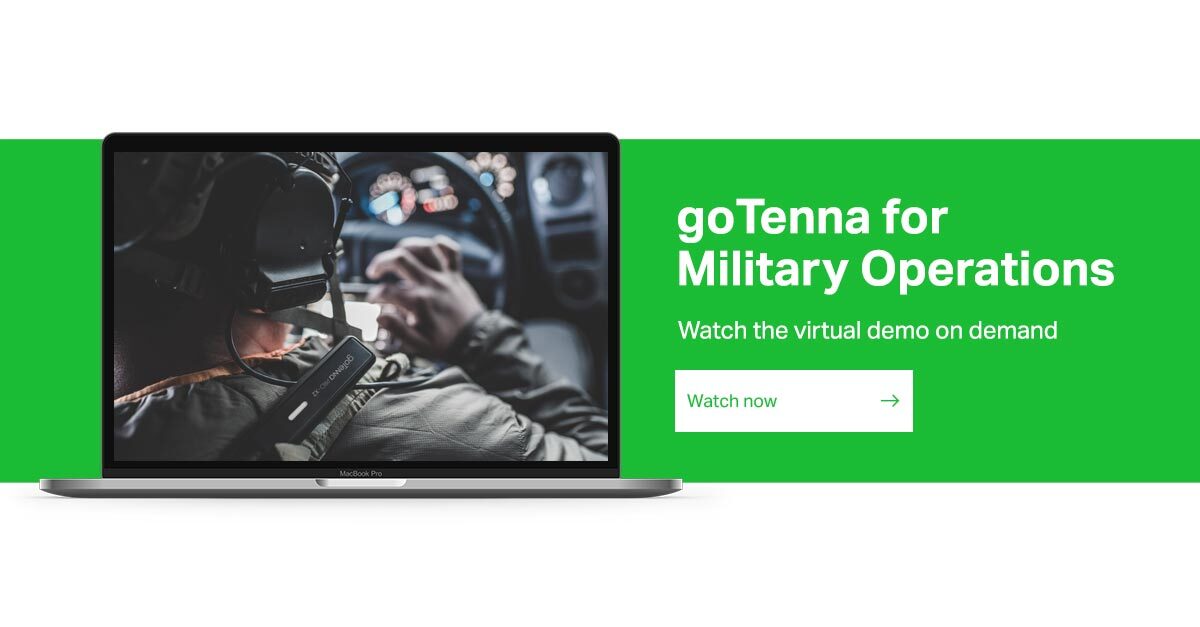

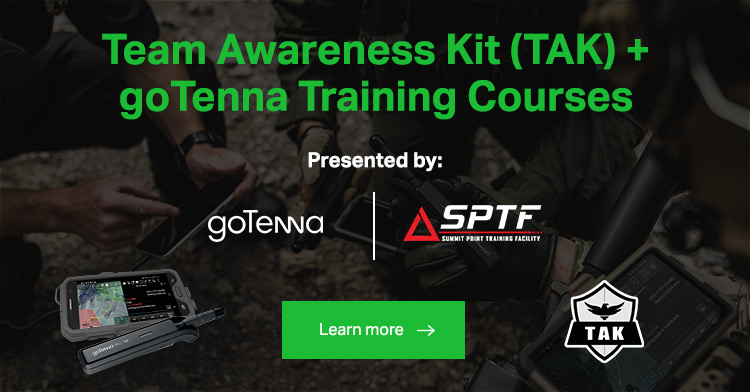
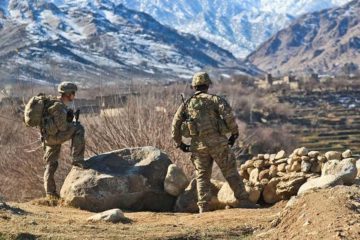
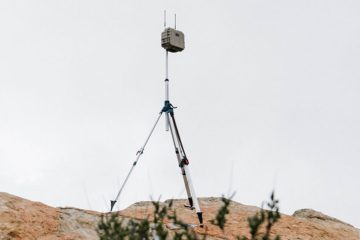
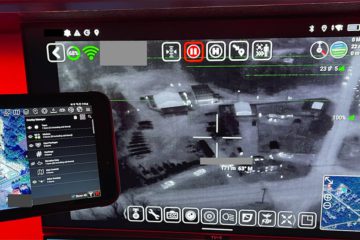


No Comment